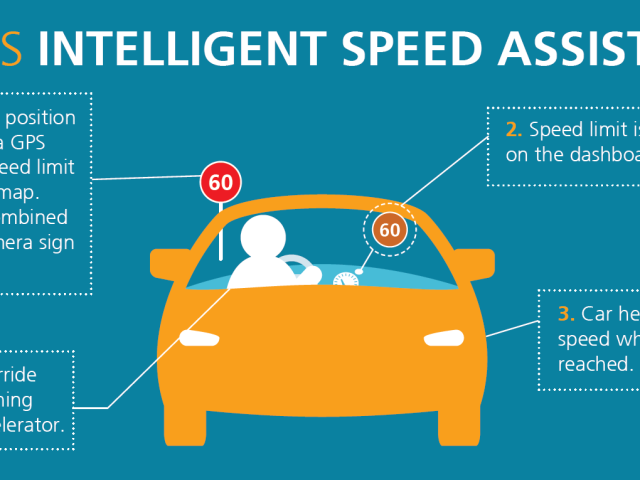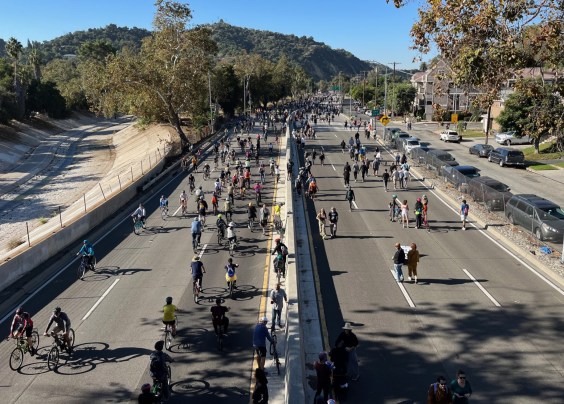Yesterday, the Senate Environmental Quality Committee held a hearing on the two-bill package that would extend California's cap-and-trade system until 2030. Both bills passed to the Appropriations Committee, whence they will head to the floor of the Senate for a vote, probably on Monday.
Governor Brown showed up to testify, a rare sight that brought cameras and a crowded hearing room. Brown stayed throughout the entire hearing, a somewhat intimidating presence in the witness chair, emphasizing how important he believes it is to pass these bills.
But the conversation at the hearing—with two exceptions, embodied by the Republican members of the committee—wasn't about whether California needs strong climate change policy. Opponents of the bill objected that it doesn't go far enough to protect California communities, and that it contains too many provisions that allow industry to game the system and avoid actual emission reductions.
The two bills—A.B. 398 and A.B. 617—are companion bills, although they are not tied together. A.B. 398, from Assemblymember Eduardo Garcia (D-Coachella) would extend the current cap-and-trade system, with some adjustments, until 2030. A.B. 617 is aimed at strengthening regulations on other emissions, apart from greenhouse gases, that have an immediate effect on people's health.
Governor Brown and cap-and-trade proponents have said it is crucial to pass A.B. 398 to bring certainty for industries that are subject to the cap, as well as for the revenue that is generated by the auctions of emission allowances.
Brown's message is that we are running out of time. “I'm going to be dead,” he said, “but you people”--he turned and pointed at audience members-- “a lot of you people are going to be alive, and in a horrible situation.”
This isn't about some cockamamie legacy. This isn't for me, I'm going to be dead. It's for you & it's damn real #ExtendItNow #CapandTrade 🌍 pic.twitter.com/dAs5GD40Sz
— Jerry Brown (@JerryBrownGov) July 13, 2017
Many of the bill's opponents at this hearing agree that there is no time to waste. They have been arguing that cap-and-trade is not working as intended—that its emission reductions are inadequate, and that in some cases the program has led to an increase in local emissions of other harmful pollutants by allowing industries to buy their way out of cleaning up their practices.
Republican opponents, on the other hand, have focused on costs, saying that constituents “that have to fill up their two cars every week” cannot afford the extra “tax” on gasoline. That is not a joke—Senator Ted Gaines (R-El Dorado) brought that up in the hearing. Both he and Senator Jeff Stone (R-Temecula), the only Republicans on the committee, mistakenly referred to cap-and-trade as a “tax” on energy, and fretted that its “regressive” nature that would harm their constituents.
Their statements are probably a better indication of the tenor of arguments that will be heard on the Senate floor than the nuanced discussion hosted in this hearing. Arguments brought up by advocates at the hearing—that California needs to do a lot better—were ignored by both of them.
Governor Brown made clear that the question wasn't whether California's climate policies will go forward. If you reject this bill, he told committee members, then the Air Resources Board will impose regulations that could be “three times as expensive” for everyone, from industry to consumers.
“If you vote no,” said Brown, “then you are the taxer.”
Senate President Pro Tem Kevin de Leon, in introducing the bill, admitted that it is “not a perfect bill” but it is the “best we can do in the current political climate.”
“It is the product,” he said, “of countless hours of negotiation and, yes, compromise. Business agrees that cap-and-trade is the least expensive way to lower greenhouse gas emissions.”
The bill includes several cuts to taxes and fees, with the gap to be filled with proceeds from the Greenhouse Gas Reduction Fund (GGRF), which collects revenue from the cap-and-trade auctions. The GGRF currently funds a range of programs including high-speed rail, affordable housing connected to sustainable transportation projects, and others aimed at reducing greenhouse gas emissions.
A.B. 398 also contains a provision that, said de Leon, would “ensure that industries are not double-regulated” by local air districts as well as by the state. That provision was a source of contention for a number of opponents at the hearing, including advocates and representatives from the Bay Area air district, which has been in a protracted battle with Chevron over emissions.
“Calling it pre-emption might be a misnomer,” said de Leon. “Local air districts have full authority to continue to regulate air quality in terms of [pollutants that directly affect health such as] NOx, SOx, particulate matter, and short-lived climate pollutants,” he said. Emissions of those harmful pollutants are connected to greenhouse gas emissions, he added, “and within that context, [local districts] can regulate CO2 as connected” emissions.
Richard Corey of the Air Resources Board said that the bill would “in no way preclude focus on other pollutants,” while admitting that both the districts and the state board need to go even further than they have in that regard. The promise was that the second bill in the package, A.B. 617, would address this issue.
Others were not convinced, including a representative of the Asian Pacific Environment Network, who said that years of work by that group and others, including the Bay Area Air Quality Management District, to create new, stricter rules around local emissions, was threatened by the provision.
Senator Nancy Skinner, (D-Berkeley), discussed the issue in some depth. “I absolutely don't want to vote on a bill that might increase local air pollution, which is what people here are worried about,” she said. “If CO2 emissions increased right around me, that would not make me sick. At same time, we don't want to increase pollution in our communities,” as advocates claim cap-and-trade does by allowing polluting industries to buy offsets rather than reduce emissions.
If not allowing local air districts to regulate CO2 would enable the oil industry to refine heavier, more carbon-intensive crude oil, as a report from Communities for a Better Environment suggests, she said, “I think we need to attack that from another direction. I don't think this bill addresses that issue.”
“The cap-and-trade program before us is only going after around 27 to 28 percent of the GHGs in our state,” said Skinner. “I would probably object if it were trying to go after more, but the vast majority of GHG reductions that we will need to meet our goal will come about through other regulations, including the Low Carbon Fuel Standard, zero-emission vehicle programs, and others.”
“There is nothing in this bill that in any way limits those,” she said, “and at the same time extending cap-and-trade enables us to put forward additional [regulations and programs]. . . It is the reduction of fossil fuel use in California that will bring about reductions,” she added. “Cap-and-trade was never going to do that.”
Senator Ricardo Lara (D-Bell Gardens) also engaged with the questions brought up by environmental justice groups and activists at the hearing. “I want you to know that we hear you,” said Lara. “We need to establish a strong program so we can see what we can invest in further emission reductions, especially in our vulnerable communities,” he said. “Requiring fifty percent of the offsets to be spent in California is a big win,” he said.
His worry, he said, is that between using the GGRF to backfill on the fees and tax cuts provided by A.B. 398 and the current programs funded by the GGRF, “it's not clear how much money we will have left. It's important to invest in projects that help our communities, meet our goals, and improve air quality.”
“This is not perfect,” he said. “We understand it is a compromise, and trust me we had to compromise a lot. But this bill gives us an opportunity to build a sustainable infrastructure. Our communities need to see the results, through growing jobs and growing the local economy.”
The sense of having had to compromise to get a bill that could pass weighed down the conversation on the second bill in the package as well. A.B. 617 from Assemblymember Christina Garcia (D-Bell Gardens), has provisions to increase penalties for polluting, and requires local plans to identify and clean up “hot spots” where pollution is concentrated.
“It does not have everything communities like mine need,” said Garcia, “but it's a step forward.”
Brown, outlining the benefits of the bill-- “it increases penalties for the first time in decades, calls for local area plans that for the first time will allow air regulators to focus on vulnerable communities that have been disproportionately impacted by pollutants, with enforceable schedule and a hard deadline”--echoed some of those sentiments. “Some think it doesn't go far enough, but it goes plenty far,” he said. “If we could do more, and keep the economy going and get votes. . . this is about as perfect as you could get in an imperfect world,” he said.
Supporters and opponents both voiced various concerns with the bill, including how it would be paid for. A representative from the South Coast Air Quality Management District said they opposed “with reluctance.”
“We applaud these plans, and agree that the tasks need to be done,” he said, “but the cost will be significant.”
A representative from Communities for a Better Environment objected more strongly. “This is a weak air quality bill that is supporting a strong anti-air quality bill,” she said, referring to A.B. 398. “A.B. 617 is being used as an excuse for preempting a right that air districts already have. Monitoring is already required. Retrofitting is incremental, not the transformational change we need. The increase in fines is long overdue, but it's not enough. And,” she asked, “who does the fine go to?” Not likely to the community whose health is being destroyed by industrial emissions.
Environmental justice advocates say they feel like they have been “thrown under the bus” in the rush to pass A.B. 398. When these bills are taken up by the Senate on Monday, there will be no public testimony. And the conversation is likely to shift away from whether this is “good enough policy” to something else, as proponents negotiate for enough votes for a two-thirds majority.






